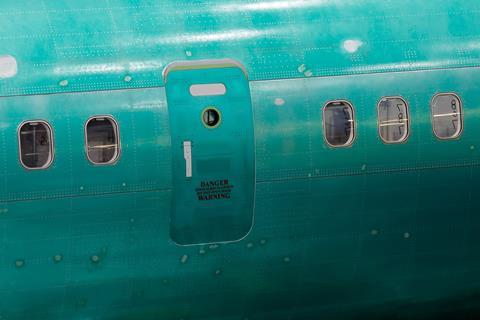They say the darkest hour is just before the dawn – and Boeing will be hoping the gloom engulfing the company is the prelude to a fresh start.
The deluge of negative news around one half of the industry’s commercial aircraft duopoly has not slowed in recent months.
Today, as during the 737 Max crisis several years ago, Boeing finds itself under the spotlight for reasons related to safety.
The 5 January in-flight blow-out of an Alaska Airlines 737 Max 9’s door-plug – terrifying, though by luck not deadly – made clear Boeing’s quality problems had not been resolved.

Since then, the flow of bad news has continued in a steady torrent. We learned the plug blew out simply because Boeing workers failed to install four bolts specifically intended to keep it from doing so. The mistake then went unnoticed and as a result an unsafe aircraft was delivered to its customer.
Meanwhile, a new whistleblower appeared: a Boeing engineer who said out-of-specification 787 fuselage gaps posed grave safety risks.
Politicians, investigators and regulators launched inquiries in response. The US Senate hauled embattled chief executive David Calhoun to a Washington hearing so lawmakers could lambast him and the company. They accused him of gross mismanagement; of turning the once-proud Boeing into a disgrace.
Then in July the company agreed to plead guilty to federal charges of defrauding the US Federal Aviation Administration (FAA) during the 737 Max’s certification.
So what else could go wrong? Actually, perhaps not much.
There is a reasonable line of thinking that Boeing might have hit bottom and could actually be starting to right the ship.
The argument goes like this: the 5 January event triggered a moment of clarity, perhaps even humility, and made Calhoun and his deputies realise – finally – that something was deeply amiss.
As evidence, amid public outcry, Boeing did exactly what it should have done long before: slam the brakes on 737 production. (Yes, the FAA also capped Boeing’s output, but the airframer’s rates dropped well below the cap.)
Vital changes to its safety culture have also been implemented.
Boeing also took the monumental step of negotiating to buy troubled supplier Spirit AeroSystems, which it formerly owned – essentially conceding that its outsourcing strategy of previous decades was flawed.
Also, Boeing has invited journalists to detailed briefings with safety and engineering executives. With their names and reputations on the line, the experts have explained the steps the airframer is taking to fix itself.
In a normal company this would be unremarkable, but Boeing’s past safety communications often involved boilerplate statements that, while insisting its aircraft were safe, said nothing of real substance.
Another reason for hope: Calhoun plans to retire at year-end; new leadership is on the horizon.
That it took Boeing to reach this state of disarray before realisation of its plight sunk in is a damning indictment. And management change does not automatically equate to improved performance.
But Boeing’s proposed guilty plea might be a signal that the airframer has finally conceded its wrongs – and admitting mistakes is the first step towards correcting them.














































